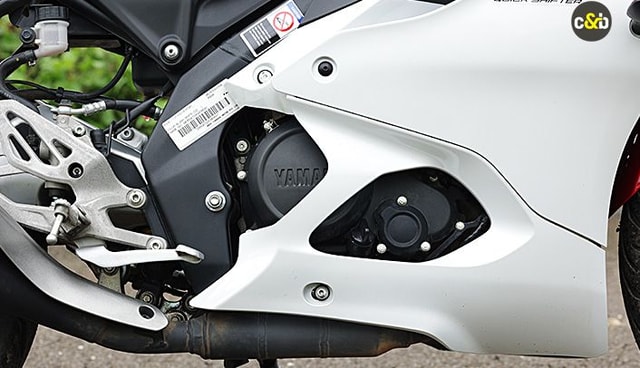Front Alignment vs 4-Wheel Alignment: How Are They Different?

Cars are an integral part of modern-day society, but to ensure maximum utility, the configurations of various systems must be perfect. Therefore, choosing the correct configurations for any car is extremely important. That applies to the type of wheel alignment that customers must choose. Therefore, it is important to understand the choices and how they can benefit the user to enjoy a smoother riding experience.

Photo Credit: pixabay.com
What is front-end alignment?
Front-end alignment is also known as two-wheel alignment. This is a process where an alignment machine is used to fix the front wheels. The technician needs instruments like toe, camber, and caster adjustment. It is pretty complex since the correct measurements and angles need to be measured.
Some advantages of front-end alignment include adjusting the suspension components whenever needed in the proper angles. This type of alignment can help increase the mileage of the car. In addition, the alignment offers a more efficient and smoother ride by reducing the steering column resistance.

Photo Credit: pixabay.com
Reasons for the front-end alignment to fail
- Traveling through bumpy roads with a lot of debris
- Driving through speed bumps and potholes
- Habits like screeching the car often and hastily applying brakes
- Colliding with heavy obstacles
What is 4-wheel alignment?
This is a process that can be performed on vehicles with independent suspension systems. 4-wheel alignment is a common feature in modern SUVs. This type of alignment can reduce unnecessary vibrations while the vehicle is in motion. Toe and camber adjustment are common in both 4-wheel alignments and front-end alignments.
Reasons for the 4-wheel alignment to fail
- Driving too fast through speed bumps and sudden curbs
- The shock absorbers being damaged leads to suspension problems in the car.
- Modifying the vehicle's height without properly adjusting the suspension accordingly (lifting).

Photo Credit: pixabay.com
Why is wheel alignment important?
- Smoother ride: One of the main factors that car manufacturers focus on is ensuring that the passengers have a smooth ride. When the alignment on the tires is incorrect, the car goes through sudden jerks and unnecessary vibrations that make it uncomfortable for the riders.
- Ensuring safety: One of the main reasons the alignment should be perfect is the safety of the vehicle and the passengers. An uneven alignment increases the chances of accidents that can damage the car or even lead to grave injuries for the people inside.
- Fuel efficiency: A well-aligned vehicle saves fuel. When the alignment is out, the vehicle consumes more fuel, leading to increased running costs.
- Lifespan of parts: The lifespan of tires and the suspension system depend on the alignment of the vehicles. Without proper alignment, the lifetime of the tires reduces significantly.
A regular visit to the nearest alignment workshop is essential to ensure that the travelers enjoy a smooth and hassle-free riding experience.
Trending News
 1 min readYamaha YZF-R2 Name Trademarked In India
1 min readYamaha YZF-R2 Name Trademarked In India
Latest News
 Carandbike Team | Dec 20, 2025KTM 390 Adventure R To Be Launched In January 2026Bookings for the KTM 390 Adventure R are expected to open very soon, wit deliveries beginning in January 2026.1 min read
Carandbike Team | Dec 20, 2025KTM 390 Adventure R To Be Launched In January 2026Bookings for the KTM 390 Adventure R are expected to open very soon, wit deliveries beginning in January 2026.1 min read car&bike Team | Dec 20, 2025BMW Motorrad India To Hike Prices By Up To 6 Per Cent From 2026The price hike will come into effect from January 1, 2026, and will be across the range of BMW two-wheelers and is due to the rupee’s sharp depreciation.1 min read
car&bike Team | Dec 20, 2025BMW Motorrad India To Hike Prices By Up To 6 Per Cent From 2026The price hike will come into effect from January 1, 2026, and will be across the range of BMW two-wheelers and is due to the rupee’s sharp depreciation.1 min read car&bike Team | Dec 19, 2025Next-gen Audi Q3 Spied In India Ahead Of Launch In 2026Third-gen Q3 made its global debut in mid-2025, getting notable tech upgrades and electrified powertrain options.2 mins read
car&bike Team | Dec 19, 2025Next-gen Audi Q3 Spied In India Ahead Of Launch In 2026Third-gen Q3 made its global debut in mid-2025, getting notable tech upgrades and electrified powertrain options.2 mins read car&bike Team | Dec 19, 2025Yamaha YZF-R2 Name Trademarked In IndiaThe Yamaha R15, one of Yamaha India’s most popular motorcycle models, is likely to continue, even when the R2 finally makes it debut.1 min read
car&bike Team | Dec 19, 2025Yamaha YZF-R2 Name Trademarked In IndiaThe Yamaha R15, one of Yamaha India’s most popular motorcycle models, is likely to continue, even when the R2 finally makes it debut.1 min read car&bike Team | Dec 18, 2025KTM 160 Duke With TFT Dash launched At Rs 1.79 LakhThe 5-inch colour TFT dash is borrowed from the 390 Duke and is shared across the brand’s sub-400cc lineup.2 mins read
car&bike Team | Dec 18, 2025KTM 160 Duke With TFT Dash launched At Rs 1.79 LakhThe 5-inch colour TFT dash is borrowed from the 390 Duke and is shared across the brand’s sub-400cc lineup.2 mins read car&bike Team | Dec 18, 2025Lamborghini Urus Seized By Cops Following Viral Clip Of Speeding On Bandra-Worli Sea LinkThe car was seized after a video of it allegedly overspeeding on the Bandra–Worli Sea Link, where the speed limit is capped at 80 kmph, went viral.2 mins read
car&bike Team | Dec 18, 2025Lamborghini Urus Seized By Cops Following Viral Clip Of Speeding On Bandra-Worli Sea LinkThe car was seized after a video of it allegedly overspeeding on the Bandra–Worli Sea Link, where the speed limit is capped at 80 kmph, went viral.2 mins read
 Bilal Firfiray | Dec 19, 2025Maruti Suzuki e-Vitara Review: Worth The Wait?After a long wait, the first-ever electric Maruti Suzuki is here. It’s the e-Vitara, and it comes with a few promises. But arriving this late, is it worth the wait? Or is it a case of too little, too late?9 mins read
Bilal Firfiray | Dec 19, 2025Maruti Suzuki e-Vitara Review: Worth The Wait?After a long wait, the first-ever electric Maruti Suzuki is here. It’s the e-Vitara, and it comes with a few promises. But arriving this late, is it worth the wait? Or is it a case of too little, too late?9 mins read Bilal Firfiray | Dec 18, 2025Mercedes-Benz G450d: The Subtle Power of EvolutionThe Mercedes-Benz G 450d evolves subtly with more power, improved efficiency, and modern tech, while staying true to the timeless G-Class design. And character.4 mins read
Bilal Firfiray | Dec 18, 2025Mercedes-Benz G450d: The Subtle Power of EvolutionThe Mercedes-Benz G 450d evolves subtly with more power, improved efficiency, and modern tech, while staying true to the timeless G-Class design. And character.4 mins read Janak Sorap | Dec 11, 2025Harley-Davidson X440 T First Ride Review: Smarter and SharperHarley-Davidson has taken the X440 and given it a more focused and engaging twist. The result is the X440 T—essentially the same platform but updated in areas that give the motorcycle more appeal and riders more thrill.5 mins read
Janak Sorap | Dec 11, 2025Harley-Davidson X440 T First Ride Review: Smarter and SharperHarley-Davidson has taken the X440 and given it a more focused and engaging twist. The result is the X440 T—essentially the same platform but updated in areas that give the motorcycle more appeal and riders more thrill.5 mins read Shams Raza Naqvi | Dec 10, 20252025 Mini Cooper Convertible Review: More Colour On Indian RoadsThe updated Mini Cooper Convertible is set to be launched in the Indian market in the next few days. We drive it around Jaisalmer for a quick review.5 mins read
Shams Raza Naqvi | Dec 10, 20252025 Mini Cooper Convertible Review: More Colour On Indian RoadsThe updated Mini Cooper Convertible is set to be launched in the Indian market in the next few days. We drive it around Jaisalmer for a quick review.5 mins read Bilal Firfiray | Dec 8, 2025Tata Sierra Review: India’s New Favourite?Marking its return after a few decades, the reborn Sierra has made everyone sit up and take notice. But is it worth the hype?10 mins read
Bilal Firfiray | Dec 8, 2025Tata Sierra Review: India’s New Favourite?Marking its return after a few decades, the reborn Sierra has made everyone sit up and take notice. But is it worth the hype?10 mins read































































































































